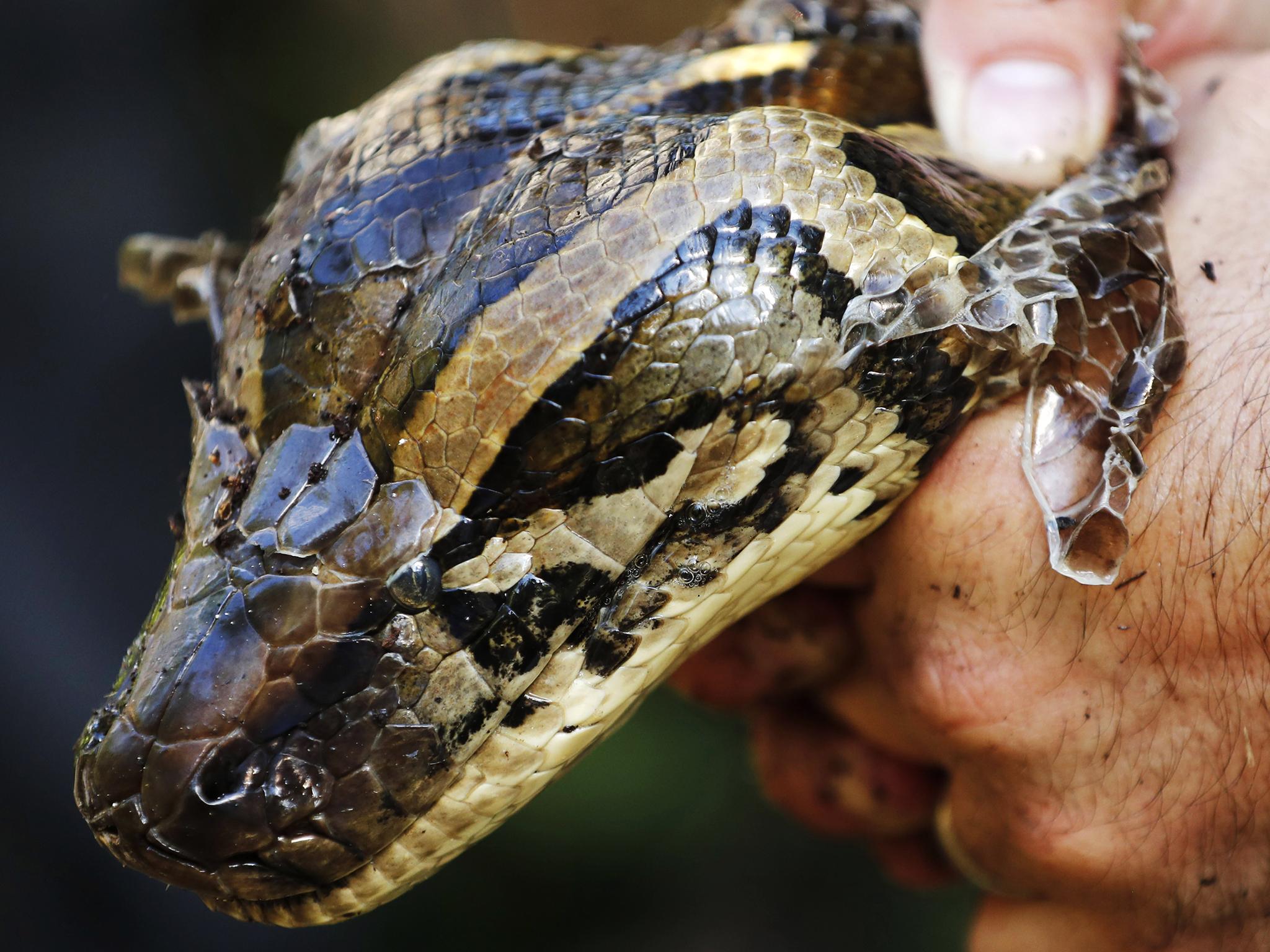Florida could use drones to fight pythons in the Everglades
State takes to the sky to tackle invasive species

Your support helps us to tell the story
From reproductive rights to climate change to Big Tech, The Independent is on the ground when the story is developing. Whether it's investigating the financials of Elon Musk's pro-Trump PAC or producing our latest documentary, 'The A Word', which shines a light on the American women fighting for reproductive rights, we know how important it is to parse out the facts from the messaging.
At such a critical moment in US history, we need reporters on the ground. Your donation allows us to keep sending journalists to speak to both sides of the story.
The Independent is trusted by Americans across the entire political spectrum. And unlike many other quality news outlets, we choose not to lock Americans out of our reporting and analysis with paywalls. We believe quality journalism should be available to everyone, paid for by those who can afford it.
Your support makes all the difference.Florida could turn to the sky to fight Burmese pythons on the ground under a bill that would allow state agencies to use drones in the effort to eradicate invasive plants and animals.
The bill, which was unanimously approved by a Senate committee, would create an exception to a current law that prohibits law enforcement from using drones to gather information and bans state agencies from using drones to gather images on private land. It would allow the Florida Fish and Wildlife Conservation Commission and the Florida Forest Service to fly drones to manage and eradicate invasive species on public lands.
Senator Ben Albritton said he has been told that drones equipped with Lidar, an acronym for Light Detection and Ranging, might be able to identify pythons.
“As you know, chasing those nasty critters down there in the Everglades is a difficult task,” Mr Albritton said. “It would help these folks do their job.”
He said drones would also help the agencies spot a fern native to Asia that's destroying Florida's natural vegetation.
“There's this plant called lygodium — old world climbing fern — which is wreaking havoc all over Everglades National Park and many other places in the state. I've flown over it in a helicopter and I recognised that it was pretty easy to discern where it is,” Mr Albritton said.
The state wildlife agency's website warns that lygodium spreads rapidly and is a “severe threat” to Everglades tree islands and puts other forests at greater risk for wildfires because it serves as a fire ladder.
“The fern's ability to grow up and over trees and shrubs and to form dense horizontal canopies allows it to cover whole communities of plants reducing native plant diversity,” the website says. “Some Everglades tree islands are so completely blanketed by the fern that it is not possible to see trees and other vegetation beneath the fern canopy.”
The bill would also allow the agencies to use drones to fight wildfires.
“During a fire they can use these drones to look for escape routes for employees, if needed, if they get trapped in,” Mr Albritton said. “They can measure tinder on the ground. There's a lot of different opportunities for that technology to yield a safer environment for those folks.”
Associated Press
Join our commenting forum
Join thought-provoking conversations, follow other Independent readers and see their replies
Comments